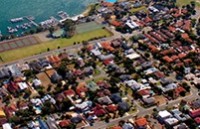New report shows cost of water bills has fallen for first time in five years
08/03/2018

The cost of residential water bills has fallen for the first time in five years, according to a report released today.
The annual National Performance Report for urban utilities found the median cost of an annual residential water bill was down by $32 from the previous year.
The National Performance Report, now in its twelfth year, compares the performance of 84 water utilities that provide urban water services across Australia and analyses the trends between years and utilities.
Water Services Association of Australia Executive Director Mr Adam Lovell said the reduction in the cost of water bills was positive news for consumers.
"Sixty per cent of water utilities reported a decrease in their typical residential bill in 2016–17," Mr Lovell said.
"The reduction is a result of efforts by water utilities to drive greater efficiencies, as shown in the five per cent reduction in operating costs when compared to the previous year. Australian water utilities continue to seek opportunities for innovation and efficiencies to improve benefits to customers."
The report also highlighted significant water savings and water security planning. These include:
- A 17 per cent reduction in the amount of water supplied to residential customers in South Australia. This was due to above-average levels of rainfall and led to a decreased demand for surface water and generation of desalinated water.
- In Western Australia, the Water Corporation returned or 'banked' 8,531ML to surface water storages, thanks to the increased usage and reliability of desalinated water. This water is set aside to service the community in periods of high demand.
The Bureau of Meteorology's General Manager Water Dr Robert Argent said intelligent management of a mix of water sources helps ensure we can meet water demand in our variable climate.
"Reducing our reliance on surface water is crucial to Australia's water security into the future," Dr Argent said.
"The outcomes in Western Australia are an indication of our growing ability to source water from non-traditional methods, something that will be critical to Australia's water security moving forward."
Other key findings from the report include:
- The median cost of supplying water to properties fell from $940 in 2015–16, to $892 in 2016–17, representing a five per cent drop
- The amount of recycled water used nationally fell by six per cent, due to above average levels of rainfall
- The median volume of water supplied to residential customers remained consistent with previous years.
The report is prepared by the Bureau, the Water Services Association of Australia (WSAA) and State and Territory governments. The public, independent report is intended to help consumers and government determine whether the water sector is operating in an efficient and cost effective manner.
It contributes to the Bureau’s Water program, which provides a comprehensive and reliable picture of Australia’s water resources to support policy and planning.
The report is available at www.bom.gov.au/water/npr/
***ENDS***










